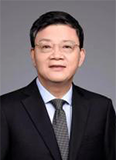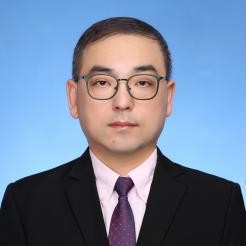

Chair Professor Tianshou Zhao
Southern University of Science and Technology
Prof. Tianshou Zhao is an expert in energy science and engineering thermophysics. He received his Bachelor' s and Master' s degrees, both in Engineering Thermo-physics, from Tianjin University, China, and Ph.D. degree from the University of Hawaii at Manoa, USA. He obtained State Natural Science Awards twice (2012, 2013), Ho Leung Ho Lee Prize for Scientific and Technological Advancement (2018), Highly Cited Researcher by Thomson Reuters (2014, 2015, 2016, 2017, 2018, 2020), Croucher Senior Fellowship award (2008). He is a fellow of the American Society Mechanical Engineers (ASME), Fellow of the Royal Society of Chemistry (RSC) and Editor-in-Chief of International Journal of Heat and Mass Transfer. Professor Zhao combines his expertise in research and technological innovation with a commitment to creating clean energy production and storage devices for a sustainable future. He has made seminal contributions in the areas of fuel cells, advanced batteries, multi-scale multiphase heat and mass transport with electrochemical reactions, and computational modeling.

Prof. Mingming Zhang
Harbin Institute of Technology, Shenzhen
As a leading talent of ten thousand people, a national outstanding youth, a member of the Chinese Academy of Sciences' Hundred Talents Program, and a Class A talent of the Shenzhen "Peacock Plan", an expert in the National Key Science and Technology Special Expert Group of the Ministry of Science and Technology, deputy director of the Wind Energy Special Committee of the China Renewable Energy Society, vice chairman of the IEEE PES New Energy Technology Subcommittee, and deputy editor in chief of "Renewable Energy", we conduct applied basic research on flow control and innovative design of large wind turbine blades, design of highly reliable wind turbines, and smart wind farms. Hosted the Ministry of Science and Technology's 863 Program, Key R&D Program, International Cooperation Projects, National Natural Science Foundation's Excellent Youth Fund, Key Fund, General Fund Projects, Chinese Academy of Sciences' "Hundred Talents Program", Leading Special Projects, etc. Published over 210 academic papers both domestically and internationally, including nearly 60 SCI indexed papers; More than 40 academic invitation reports at home and abroad; Close to 50 invention patents have been applied for or authorized. Received more than 10 awards, including the AIAA Young Scholar Science and Technology Honor Award, the Outstanding Award for the Final Evaluation of the Hundred Talents Program, the Second Prize for National Energy Science and Technology Progress, the Second Prize for Science and Technology Contribution of the Chinese Academy of Sciences, the First Prize for China Energy Innovation, the Second Prize for Science and Technology in Beijing, the Second Prize for China Electric Power Science and Technology Progress, and the Wu Zhonghua Outstanding Young Scholar Award.
Title:Research and Application of AI Empowered Wind Energy Utilization Technology
Abstract:With the advent of the Fourth Industrial Revolution, the cognitive partnership between artificial intelligence and humans has been established. Based on artificial intelligence technology, advanced technologies such as digital twins, big data, cloud computing, 5G, and the Internet of Things are deeply integrated. Through unified monitoring and management of wind turbines, key components, and wind farms, reliable data governance and optimal collaborative control of working conditions, equipment status, fault warning, and other aspects are achieved. It has the characteristics of openness, learning, growth, heterogeneity, and interactivity, which will bring greater value enhancement to the wind power industry, while solving industry pain points, reducing costs, and increasing efficiency. To this end, this report will share relevant achievements and experiences with leaders and experts, focusing on the research and application of basic theories and technologies in intelligent wind power forecasting, intelligent design and control of large and ultra large wind turbines and key components, intelligent wind farm forecasting, design, site group control and operation, and related intelligent energy management.

Prof. Bernd R. Noack
Shenzhen University
Bernd R. Noack is Distinguished Professor at Shenzhen University, Chief Scientist at the Guangdong Province VTOL Manufacturing Innovation Center, Director at the Guangdong-Hong Kong-Macao Greater Bay Aera Low Altitude Economy Research Institute Professor, Chair at TU Berlin and Adjunct/Visiting/Honorary Professor at Harbin Institute of Technology, Shenzhen Technology University and University Carlos III of Madrid and. In Shenzhen, he heads a growing team with five laboratories for the aerodynamics and control problems of the low-altitude economy. For over three decades, he has worked on engineering turbulence control for transport vehicles in leading European and the US institutions, including the Max-Plank Society, German Aerospace Center (DLR), United Technologies Research Center (UTRC), TU Berlin and the French National Center for Scientific Research (CNRS). Prof. Noack has written over 350 refereed publications, including 2 international patents, 1 China Utility Model Patent, 6 books and over 170 journal articles. His work has been awarded with dozens of national and international awards. For instance, he became Fellow of the American Physical Society, got the first senior ANR Chair of Excellence in Fluid Mechanics, and was the only winner of the annual von Mises award 2005. Mendeley/Stanford lists him as highly cited scientist and Research.com rates him as Top Mechanical and Aerospace Engineering Scientist in China and worldwide.
Title: Aerodynamic technologies and artificial intelligence for a gust-safe low-altitude economy
Abstract: The rapidly evolving low-altitude economy transforms mankind into an aerial society: Drones and air taxis allow unprecedented transport and mobility over traffic jams in congested metropolises and to remote rural destinations. Yet, steady winds and wind gusts challenge the safety of air taxi and delivery drone operation in urban environments. These winds lead to unintended displacements and may result potential collisions and accidents. We address this safety challenge for multicopter drones and similarly designed air taxis on several fronts. First, an aerodynamic drone model is developed for low and high-speed operation. This plant serves for the assessment and optimization of cruise performance and flight control under wind. Second, the urban wind conditions are emulated in our Aerial City Lab simulations and experiments with a self-build fan array wind generator (FAWG) with 40 × 40 individually controllable fans (Guinness World Record 2025). Thus, flow prediction methodologies are developed for sparse optimized sensors. Finally, the
flight control is optimized for take-off, landing and cruise under gusty wind conditions. The control design employs the aerodynamic model, artificial intelligence based learning and is further improved by estimated flow conditions. This lecture is based on work of Prof. Noack’s team, in particular Yutong Liu, Yanting Liu,
Tianyu Wang, Zhutao Jiang, Yiqing Li, Chang Hou, Yutong Liang, Muhammad Babansoro Sanusi, Matheesha Pathiraja and Guy Cornejo Maceda (HIT/UC3M) in collaboration with the teams of Profs. Xiaozhou He (HIT), Hongwei Zhang (HIT), Gang Hu (HIT), Franz Raps (SZTU), Jun Yang (UESTC), Nan Gao (HangHua), Yang Yang (SZUAVIA), Yannian Yang (SCUT), Dmitry Kolomenskiy (Skoltech), Andrea Ianiro (UC3M) and Stefano Discetti (UC3M).

Prof. Zhen Huang
Guangzhou Institute of Energy Conversion, Chinese Academy of Sciences
Zhen Huang, Ph.D. in Engineering, serves as a researcher and doctoral supervisor at the Guangzhou Institute of Energy Conversion, Chinese Academy of Sciences (CAS). Dr. Huang acts as the Deputy Director of theNational Energy Biofuel Research Center, a National Excellent Young Talent under the WR Program. a project leader of the National Key R&D Program’s “Key Technologies and Equipment for Circular Economy,” a Distinguished Key Scientist of the CAS, and a recipient of the Guangdong Provincial Distinguished Young Scholar award. Dr. Huang focuses on chemical looping gasification, reforming, and hydrogen production of carbon-containing fuels. Furthermore, he has published over 150 SCI journal papers, with more than 6,000 citations and an H-index of 45. He is listed among the World's Top 2% Scientists. He holds 12 authorized invention patents (including 2 PCT patents). He also won many awards, including the Guangdong Youth Science and Technology Innovation Award, the First-Class Guangdong Natural Science Award, and the Second-Class Henan Natural Science Award. He is a member of the CAS Youth Innovation Promotion Association and was recognized as an Outstanding Young Scientific Talent by the Chinese Renewable Energy Society. Dr. Huang has undertaken more than ten projects including the National Key R&D Program, National Natural Science Foundation of China, Guangdong Provincial Natural Science Foundation Key Fund, and cooperation funds from the Institute of Clean Energy Innovation, Chinese Academy of Sciences. Moreover, he serves as a guest editorial board member for numerous SCI/EI journals such as Carbon Energy and Green Carbon. He is also a member of the Engineering Thermochemistry Committee of the Chemical industry and Engineering Society of China, Secretary-General of the Urban and Rural Mining Industry-University-Research Alliance, Deputy Secretary-General of the Guangdong Engineering Thermophysics Society, Executive Chair of the 8th National Youth Combustion Academic Conference, and Secretary-General of the 1st China Chemical Looping Conference.
Title: Chemical Looping Gasification of Organic Solid Waste
Abstract: The energy recovery and resource utilization of organic solid waste are important pathways to promote China’s green, low-carbon, and high-quality development and to achieve the “dual carbon” goals. Thermochemical conversion technologies are key methods for realizing the “reduction, resource recovery, and harmless treatment” of organic solid waste. Among them, gasification technology is a relatively low secondary pollution, energy-efficient, and comprehensive utilization technology for the disposal of organic solid waste, which is especially meaningful for decentralized treatment and disposal of such waste. To address the bottlenecks of conventional gasification of organic solid waste—namely, low-quality syngas (characterized by high tar content and low H₂/CO ratio) and high levels of secondary pollutants, which prevent its direct use as a feedstock for synthesizing high-value liquid fuels or chemicals—this report innovatively proposes a chemical looping gasification (CLG) technology solution. The main reported contents include:1) Using bulk natural iron ore or industrial iron-containing waste residue as the oxygen carrier matrix, and based on the energy and pollutant element distribution characteristics in the fuel, exogenous active components are directionally introduced to enhance the reactivity of the Fe-based oxygen carrier, thereby developing a high-performance composite oxygen carrier that actively matches the fuel characteristics;2) Based on transition metal-enhanced Fe-based composite oxygen carriers, a new chemical looping gasification method for producing high-quality syngas from agricultural and forestry organic solid wastes (which have low content of pollutants such as N, S, and Cl) is pioneered internationally, resulting in syngas with low tar content and a controllable H₂/CO ratio ranging from 1 to 3;3) Based on alkali (earth) metal-enhanced Fe-based composite oxygen carriers, a novel chemical looping conversion approach is explored for industrial and municipal organic solid wastes (with high levels of N, S, Cl pollutants) to produce clean syngas, achieving a 90% reduction in tar content and an integrated removal rate of nitrogen, sulfur, and chlorine pollutants exceeding 95%.